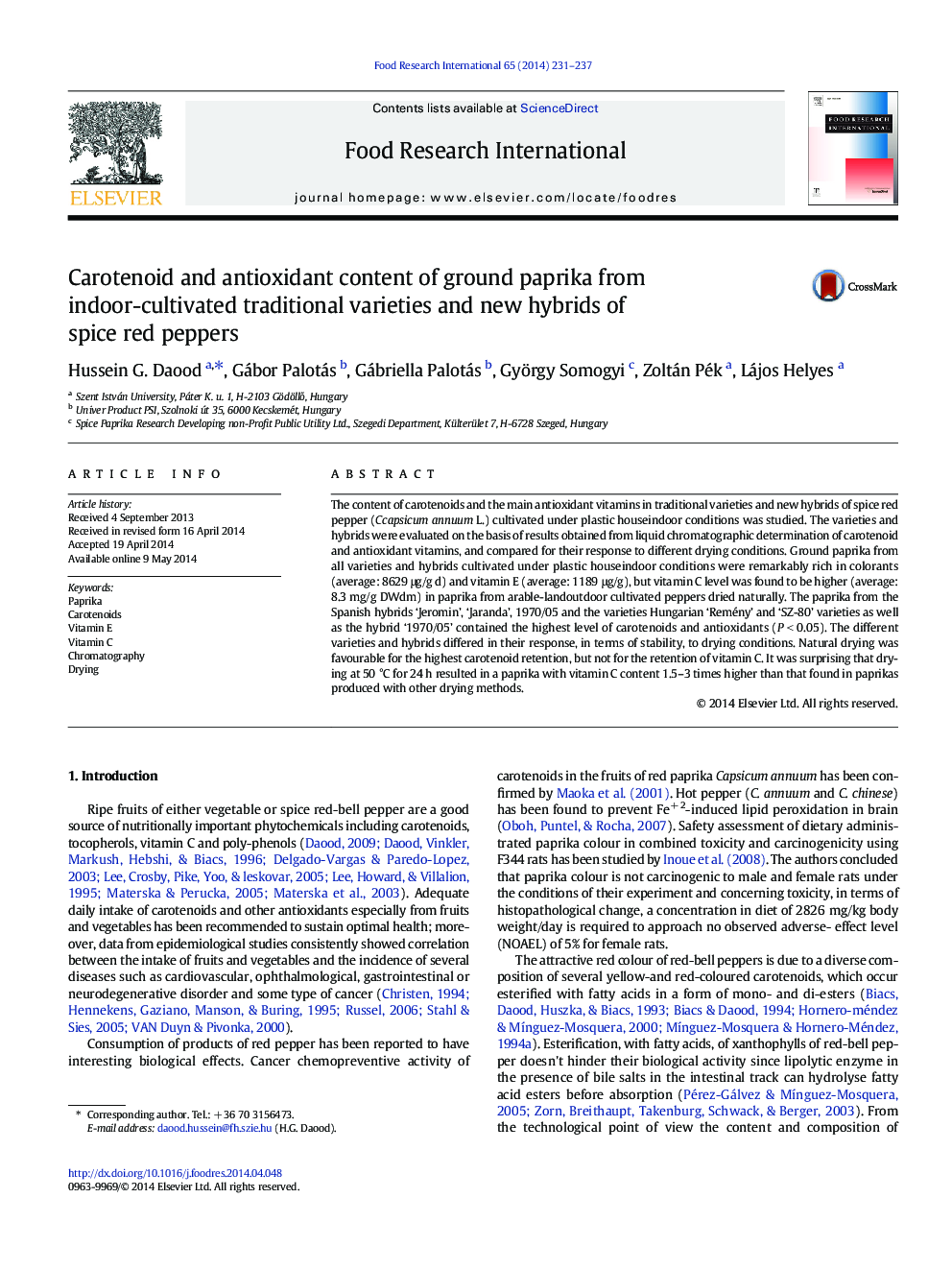| Article ID | Journal | Published Year | Pages | File Type |
|---|---|---|---|---|
| 6396345 | Food Research International | 2014 | 7 Pages |
â¢The new hybrids for plastic house cultivation were evaluated for the first time.â¢New raw materials for production of high quality paprika were assessed.â¢The different peppers had different response to drying conditions.â¢Drying at 50 °C produced paprika with remarkably high vitamin C content.
The content of carotenoids and the main antioxidant vitamins in traditional varieties and new hybrids of spice red pepper (Ccapsicum annuum L.) cultivated under plastic houseindoor conditions was studied. The varieties and hybrids were evaluated on the basis of results obtained from liquid chromatographic determination of carotenoid and antioxidant vitamins, and compared for their response to different drying conditions. Ground paprika from all varieties and hybrids cultivated under plastic houseindoor conditions were remarkably rich in colorants (average: 8629 μg/g d) and vitamin E (average: 1189 μg/g), but vitamin C level was found to be higher (average: 8.3 mg/g DWdm) in paprika from arable-landoutdoor cultivated peppers dried naturally. The paprika from the Spanish hybrids 'Jeromin', 'Jaranda', 1970/05 and the varieties Hungarian 'Remény' and 'SZ-80' varieties as well as the hybrid '1970/05' contained the highest level of carotenoids and antioxidants (P < 0.05). The different varieties and hybrids differed in their response, in terms of stability, to drying conditions. Natural drying was favourable for the highest carotenoid retention, but not for the retention of vitamin C. It was surprising that drying at 50 °C for 24 h resulted in a paprika with vitamin C content 1.5-3 times higher than that found in paprikas produced with other drying methods.
